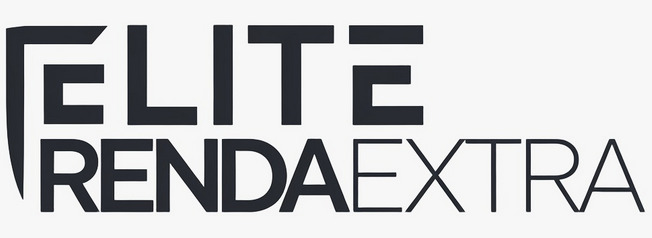Navigating the world of personal finance can sometimes feel like trying to solve a complex puzzle. When a large expense pops up unexpectedly, or when you’re looking to consolidate debt into a more manageable payment, a personal loan can seem like the perfect solution. They offer a straightforward way to access funds when you need them most.
But before you start planning how to use the money, it’s crucial to understand what lenders are looking for. In Canada, financial institutions have a clear set of criteria to determine who qualifies for a loan. This guide will walk you through the essential personal loan requirements, helping you assess your eligibility and prepare a strong application.
Understanding the Basics of a Personal Loan
At its core, a personal loan is a sum of money you borrow from a lender, such as a bank, credit union, or online institution, which you agree to pay back in fixed monthly installments over a set period. Most personal loans in Canada are unsecured, meaning you don’t have to provide collateral like a car or a house to back the loan. This makes them accessible but also means the lender’s decision relies heavily on your financial health.
Your interest rate can be either fixed (staying the same for the loan’s duration) or variable (changing with market rates). Understanding these fundamentals is the first step in determining if a personal loan is the right fit for your financial situation.
Core Eligibility Criteria for Personal Loans in Canada
While specific requirements can vary slightly from one lender to another, there are several core factors that all of them will assess. Meeting these fundamental criteria is non-negotiable for getting your application approved.
Age and Residency Status
This is the most straightforward requirement. To enter into a legally binding contract like a loan agreement in Canada, you must:
- Be at least the age of majority in your province or territory (18 or 19 years old).
- Be a Canadian citizen or a permanent resident.
Lenders need to verify your identity and legal status within the country to ensure the loan is enforceable and to comply with federal regulations.
A Steady and Verifiable Income
Lenders need assurance that you can repay the loan. A stable income is the primary indicator of your ability to make consistent monthly payments. They will want to see proof of regular income, which can come from various sources:
- Full-time or part-time employment
- Verifiable self-employment income
- Pension or retirement income
- Long-term disability benefits
Many lenders have a minimum annual income threshold, often starting around $20,000, but this figure can be higher depending on the lender and the loan amount you’re requesting.
Credit Score and Financial History
Your credit score is a numerical representation of your reliability as a borrower. It’s one of the most critical factors in a lender’s decision. A higher score suggests a lower risk, which can lead to better interest rates and higher approval odds. Here’s a general breakdown of what the numbers mean for your credit score in Canada:
| Credit Score Range | Rating | Lender’s Perspective |
|---|---|---|
| 760-900 | Excellent | You are considered a very low-risk borrower. Expect the best rates and terms. |
| 660-759 | Good | You are a reliable borrower. High chance of approval with competitive rates. |
| 560-659 | Fair | Approval is possible, often with online lenders or credit unions, but likely at a higher interest rate. |
| 300-559 | Poor | Approval is very difficult with traditional lenders. May need to look at specialized bad-credit lenders. |
Essential Documents for Your Loan Application
Being prepared with the right paperwork can significantly speed up the approval process. Lenders need to verify the information you provide. Have these documents ready:
- Proof of Identity: A valid government-issued photo ID like a driver’s license or passport.
- Proof of Address: A recent utility bill, lease agreement, or bank statement with your name and current address.
- Proof of Income: This is crucial. Be ready to provide recent pay stubs, T4 slips, a letter of employment, or your Notice of Assessment from the CRA if you are self-employed.
- Bank Account Details: Lenders usually require pre-authorized debit information from a chequing account for loan disbursements and repayments.
- List of Debts and Assets: A summary of your other financial obligations (like car loans, mortgages, or credit card debt) and assets.
How Your Debt-to-Income (DTI) Ratio Matters
Beyond your credit score, lenders closely examine your Debt-to-Income (DTI) ratio. This metric compares your total monthly debt payments to your gross monthly income. It gives the lender a clear picture of whether you can comfortably take on another monthly payment.
The formula is simple: DTI = (Total Monthly Debt Payments / Gross Monthly Income) x 100
Lenders generally prefer a DTI ratio below 43%. A lower DTI indicates that you have a healthy balance between debt and income, making you a more attractive candidate for a new loan.
Tips to Improve Your Loan Approval Chances
If you’re worried your profile isn’t strong enough, there are proactive steps you can take to become a better candidate before you apply.
- Review Your Credit Report: Before applying, check your credit report for any errors or inaccuracies that could be hurting your score. Disputing them can provide a quick boost.
- Lower Your Credit Utilization: Pay down the balances on your credit cards. High balances relative to your credit limits can negatively impact your score. Aim to use less than 30% of your available credit.
- Build a Positive Payment History: If you have time, spend a few months ensuring every single bill is paid on time. This is the most significant factor in your credit score.
- Consider a Co-Signer: If your credit or income is on the lower side, applying with a co-signer who has a strong financial profile can greatly increase your chances of approval. Remember, this person becomes legally responsible for the debt if you fail to pay.
- Get Pre-Qualified: Many online lenders and some banks offer pre-qualification. This process uses a soft credit check (which doesn’t affect your score) to show you what loan amounts and rates you might be eligible for.
Meeting the eligibility criteria for a personal loan in Canada is about demonstrating financial stability and reliability. By understanding what lenders look for—a stable income, a solid credit history, and a manageable level of debt—you can approach the application process with confidence. Take the time to gather your documents and strengthen your financial profile before you apply.
For a comprehensive overview from a trusted source, you can review the official government resources on personal loan requirements in Canada. This preparation will not only increase your chances of approval but also help you secure the best possible terms for your loan.

